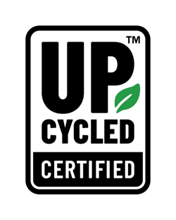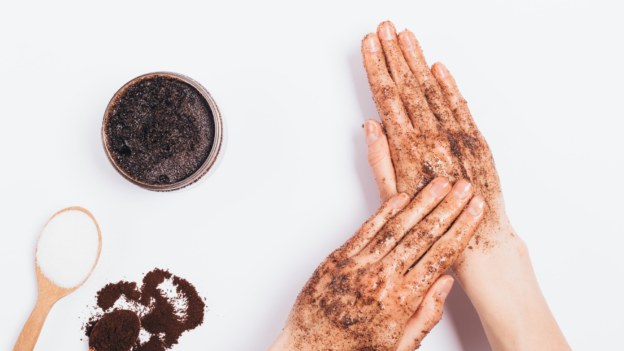The beauty industry has a huge environmental impact as it highly contributes to air, land, and ocean pollution. A massive part of the waste comes from the packaging; however, the entire impact is not just limited to this. The whole lifecycle of cosmetic products results in various effects on the environment. This includes the source of the raw materials being used, the production process, the mode of distribution, and the generated waste from the whole process itself to the end use of the product.[1] Evidently, the cosmetic industry must do its part in managing these issues.
Embracing sustainability
In recent years, more and more cosmetic companies recognize the importance of implementing activities that may contribute to achieving sustainable development goals. The design stage is vital in determining the overall environmental impact of a product. When possible, Life Cycle Assessment (LCA) is conducted to calculate the overall environmental impacts in terms of consumption and emissions.[2] For formulators, the careful selection of raw materials and the formulation method are integral in attaining sustainable goals. For instance, palm oil is widely used not just in cosmetics but in other industries as well.[3] However, the vast environmental impact of the palm oil industry has been criticized and to adapt to this, manufacturers are opting for either RSPO-certified palm oil or using an alternative to it. Because of these environmental issues, there is a growing demand for more sustainable and eco-friendly ingredients.
Waste “makeover”
Aside from using sustainably sourced ingredients, cosmetic companies have also tried reusing discarded raw materials in their production. Some examples are the use of coffee grounds, olive oil waste, and fruit peels for scrubs, soaps, and lip balms application. This is also called the method of upcycling.[4] Oftentimes, the term “upcycling” is confused with “recycling” and “downcycling. Here are the differences between these three:
Recycling – transformation of products or waste that are initially intended to be destroyed into products with similar or equivalent value.[5]
Downcycling – transformation of products or waste that are initially intended to be destroyed into products with lesser value.5
Upcycling – transformation of products or waste that are initially intended to be destroyed into products with higher value.5
In other words, upcycling is the process of creating new high-value products from old or discarded materials or products. Waste materials can be collected, cleaned, and transformed into something useful, thus reducing the amount of trash sent to landfills. In particular, food and beverage industry waste could be the main source of materials that can be upcycled into cosmetic ingredients.4 These materials are typically rich in bioactive substances that have various skin benefits.
What the industry has to offer
More and more raw material companies are developing and offering upcycled ingredients. Probably the most notable one is the Upcycled Beauty Company which is solely created to “bring upcycling into the spotlight”. They have the Full Circle portfolio of ingredients that are entirely made from upcycled plant-based leftovers. They offer oil- and water-soluble actives as well as powders & scrubs. For example, they offer ingredients that are upcycled from the waste of the blueberry juicing industry. Interestingly, they also created a directory of upcycled ingredients from manufacturers globally. They have published it here – https://www.upcycledbeauty.com/upcycled-directory. From here, you can find a wide range of cosmetic raw materials from excipients to active ingredients. Thus, they also believe that it is possible to create a beauty product solely using upcycled materials.[6]
The Upcycled Certification

Because of the increasing attention to upcycled products, not just in the beauty industry, the first certification mark has been developed by the non-profit organization Upcycled Food Association (UFA). This logo features “upcycled ingredients and products procured and produced with surplus food or food by-products from manufacturing, that use verifiable supply chains and have a positive impact on the environment”. They also provide different types of certifications from ingredients to products.[7] It is very important to have this kind of certification in the industry to ensure that the upcycled material we use indeed has a positive impact instead of a negative one. For example, a Life Cycle Assessment of a cosmetic product using Palmitic/Stearic Triglycerides obtained from the by-products of Olive oil production has shown that there could be an overall negative impact on the environment instead due to the processing methodologies used in the extraction of the material.[8]
Going full circle
Upcycling is an eco-innovation that helps reduce waste and limit the production of new materials. In addition, it is also cost-effective since the starting materials are wastes from other industries. For cosmetic chemists, upcycled ingredients give limitless options in the development of cosmetic products while being environmentally conscious. To conclude, it is valuable to share that choosing upcycled ingredients is one way to contribute to sustainable practices in the industry.
Bibliography
| [1] | Cosmetics Europe, “Environmental Sustainability: the European Cosmetic Industry’s Contribution,” Cosmetics Europe, 2019. |
| [2] | CMCC, “Palm oil’s implication on the Sustainable Development Goals,” CMCC, 2022. |
| [3] | A. Ledesma, “Circular beauty: upcycled ingredients in cosmetic products”.natrue.org. |
| [4] | O. Young, “Treehugger.com,” 28 July 2022. [Online]. Available: https://www.treehugger.com/environmental-impact-of-cosmetics-5207672. [Accessed 3 April 2023]. |
| [5] | Safic Alcan, “Secrets of the Upcycling Trend in Cosmetics,” safic-alcan.com. |
| [6] | The Upcycled Beauty Company, “upcycledbeauty.com,” [Online]. Available: https://www.upcycledbeauty.com/our-mission. [Accessed 4 April 2023]. |
| [7] | Upcycled Food Association, “upcycledfood.org,” [Online]. Available: https://www.upcycledfood.org/. [Accessed 4 April 2023]. |
| [8] | M. Secchi, V. Castellani, E. Collina, N. Mirabella and S. Sala, “Assessing eco-innovations in green chemistry: Life Cycle Assessment (LCA) of a cosmetic product with bio-based ingredient,” Journal of Cleaner Production, vol. 129, pp. 269-281, 2016. |
[1] [4]
[2] [2]
[3] [3]
[4] [4]
[5] [5]
[6] [6]
[7] [7]
[8] [8]

